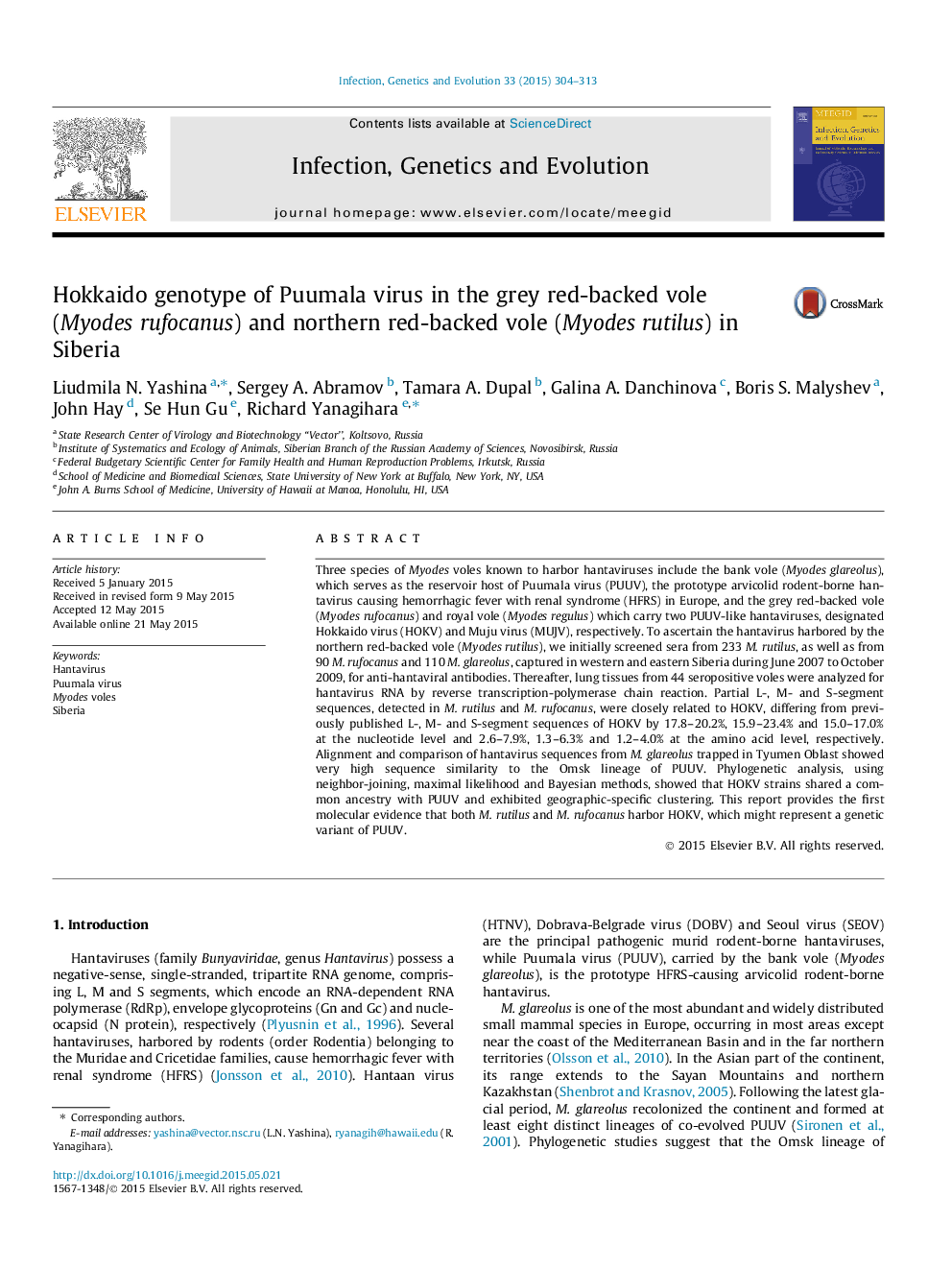| کد مقاله | کد نشریه | سال انتشار | مقاله انگلیسی | نسخه تمام متن |
|---|---|---|---|---|
| 5908889 | 1570170 | 2015 | 10 صفحه PDF | دانلود رایگان |

- Three species of Myodes voles occupy the same ecological niche in Siberia.
- Myodes glareolus harbors Puumala virus in Siberia.
- Myodes rufocanus and Myodes rutilus serve as the reservoir hosts of the Hokkaido genotype of Puumala virus in Siberia.
Three species of Myodes voles known to harbor hantaviruses include the bank vole (Myodes glareolus), which serves as the reservoir host of Puumala virus (PUUV), the prototype arvicolid rodent-borne hantavirus causing hemorrhagic fever with renal syndrome (HFRS) in Europe, and the grey red-backed vole (Myodes rufocanus) and royal vole (Myodes regulus) which carry two PUUV-like hantaviruses, designated Hokkaido virus (HOKV) and Muju virus (MUJV), respectively. To ascertain the hantavirus harbored by the northern red-backed vole (Myodes rutilus), we initially screened sera from 233 M. rutilus, as well as from 90 M. rufocanus and 110 M. glareolus, captured in western and eastern Siberia during June 2007 to October 2009, for anti-hantaviral antibodies. Thereafter, lung tissues from 44 seropositive voles were analyzed for hantavirus RNA by reverse transcription-polymerase chain reaction. Partial L-, M- and S-segment sequences, detected in M. rutilus and M. rufocanus, were closely related to HOKV, differing from previously published L-, M- and S-segment sequences of HOKV by 17.8-20.2%, 15.9-23.4% and 15.0-17.0% at the nucleotide level and 2.6-7.9%, 1.3-6.3% and 1.2-4.0% at the amino acid level, respectively. Alignment and comparison of hantavirus sequences from M. glareolus trapped in Tyumen Oblast showed very high sequence similarity to the Omsk lineage of PUUV. Phylogenetic analysis, using neighbor-joining, maximal likelihood and Bayesian methods, showed that HOKV strains shared a common ancestry with PUUV and exhibited geographic-specific clustering. This report provides the first molecular evidence that both M. rutilus and M. rufocanus harbor HOKV, which might represent a genetic variant of PUUV.
Journal: Infection, Genetics and Evolution - Volume 33, July 2015, Pages 304-313